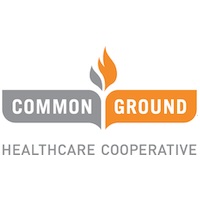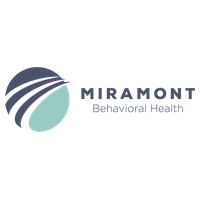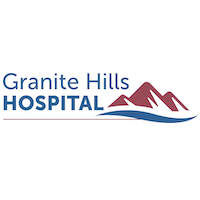
Engels talks new role as HRSA leader

Tom Engels, head of the Health Resources and Services Administration, sees a lot of similarities between the federal agency and the Wisconsin Department of Health Services, where he was second in command until earlier this year.
Engels became administrator for HRSA in November after serving as acting head of the agency since August.
He joined HRSA in April. The agency uses its $11.7 billion budget to expand healthcare through grants to state and local government, providers and training programs.
“The interesting aspect for me coming to HRSA was a lot of the programs that we had at the Department of Health Services in Wisconsin, especially in our public health area, were programs that were directly related to programs that are administered by HRSA,” he said in an interview with Wisconsin Health News Wednesday. “I had a lot of familiarity with those programs, and I just jumped at the opportunity.”
Engels was deputy secretary at DHS until January. He’s also served as assistant deputy secretary at the Department of Safety and Professional Services and was previously vice president of public affairs at the Pharmacy Society of Wisconsin. Edited excerpts from the interview are below.
WHN: How does your experience at the state level affect your perspective in your new role? Is it unique to have that experience at the agency?
TE: Not only do I think it’s unique, I think it’s incredibly helpful. Because I got to see, back in Wisconsin, how grants would come from the federal government into a state agency. I got to see how the state agency then distributed those funds going all the way down to the local municipalities, counties, towns, cities, and actually have a chance to meet with elected officials or local officials about those programs and how those programs were benefiting those citizens.
And that’s one of the things that I guess I really see as a big benefit. I got to see firsthand the grant-making process, the grant-writing process, at the state level. And now when I’m here, I get to see and interact with staffers that are going through the grant-writing process in making sure that they understand how that’s being received and how that information gets translated down to the state level.
WHN: HRSA provides a lot of grants to rural and underserved areas throughout the country. Do you see similarities in health challenges facing those areas or are each facing unique issues?
TE: There’s some similarities, but there’s also some unique challenges across the country…we see populations in the rural areas, sometimes, are a little sicker. Sometimes they have more challenges than urban areas. So that’s similar to Wisconsin.
When you get into some of the similar barriers that you see in rural areas, we saw the same thing back in Wisconsin as I’ve seen here. We see issues, for example, with insurance coverage, transportation issues, the stigma of dealing with privacy issues in some of those areas where people in rural areas say that they’re afraid that everybody’s going to know what’s going on, so they’re afraid to go see somebody. Well, we want to make sure they’re getting access to care. And the other one, I think that you probably hear about a lot in Wisconsin that we see here as well is broadband issues.
WHN: Wisconsin providers are having trouble filling some healthcare jobs, a workforce challenge being exacerbated by an aging population. What is HRSA doing to address that?
TE: I had a chance to go to the United Nations a couple of months ago and represent the U.S. at one point, sitting in the chair. It was really interesting. I went to a meeting that the secretary had with international representatives. And you know, it was interesting to see that some of the exact same shortage issues that we talk about in the United States are happening all over the world. We’re dealing with an aging population. And when we’re also dealing with an aging population, we’re dealing with an aging workforce population. So we see that here. And so we’ve been working with our Bureau of Health Workforce on this. And some of the areas that we’re working on are student loans, through scholarships, grants going out to agencies to support the education and training of primary care physicians and in areas of oral health. Behavioral health is another big area. Public health, nursing, geriatrics. All of these are areas that we’re working to try to address.
WHN: Is it possible to train enough people to fill those roles? What other approaches are needed?
TE: In many cases, it’s going to be a matter of creating opportunities for those providers and being able to connect providers with the resources that they have. So we’re just going to continue to work on that. It’s a battle, but we continue to do it.
One of the things I just wanted to bring up here real quick is our new rural residency planning and development program. It creates physician residency programs focused on family medicine, internal medicine and psychiatry in collaboration with the Federal Office of Rural Health here at HRSA. And you know, psychiatry is one of the examples that we can talk about. We saw problems with that, not only in Wisconsin, but we know it’s a problem across the country.
But other things that we do, we have virtual job fairs where we try to connect our National Health Service Corps and Nurse Corps with providers in residency areas that we can put them in. So we try to keep those connections going. We’re just looking at every opportunity. We’re using the technology that’s available to us right now and, and a virtual job fair was one that we found to be very successful.
WHN: What is your agency doing to target psychiatrists?
TE: The same thing that we’ve been talking about. They’re all in the same area. We can take a look at behavioral health areas. We’re trying to work with our primary care programs in the health centers in making sure that primary care physicians can have some basis of knowledge and have some background in that area. But we’re also looking at utilizing loans and grants to reach out to those areas and try to make sure that we can make them accessible to a potential grantees or residency programs. We want to make those offers available.
But as I was saying with the health centers, we have about 1,400 health centers across the country. And out of the 1,400, we have about 12,000 sites in total. And we’re really trying to work with our health centers to train primary care positions to be able to identify that.
In other areas, we’re taking a look at telehealth services. That technology, similar to what we started to do in Wisconsin, where we can make telehealth psychiatric services available to primary care physicians in rural areas. We have all this technology right now. Everybody has a smartphone. Everybody has access to Skype or something like that. We just want to make sure that that those technologies right now are being used. I’ll give you an example here. Sixty-five percent of the non-metro counties lack psychiatrists compared to 27 percent of the metro areas. So people living in rural areas have a harder time getting access to those services. And so we want to try to improve access.
WHN: Community health centers have concerns because Congress has continued enacting short-term funding bills to continue the Community Health Center Fund, which accounts for 70 percent of their federal grant funding. If Congress isn’t able to reach agreement on a funding resolution this month, how much funding is left?
TE: HHS is currently operating under a continuing resolution, which extends funding for FY 2019 through Dec. 20th, 2019. With current available funding through the continuing resolution, HRSA is able to provide health centers with funding to cover operations through May 31st, 2020.
WHN: Do you see a need for a long-term funding solution?
TE: The secretary said it best yesterday: He’s hopeful, but it’s really up to Congress right now.
WHN: What role is HRSA playing in the federal plan to end the HIV epidemic by 2030?
TE: We’ve got a great opportunity when Gilead donated doses for up to 200,000 patients annually through the year 2030 for access to PrEP. The particular drug is Truvada. And by providing Truvada to a patient base that we’re basically talking about are people that don’t have health insurance or at least health insurance without prescription drug coverage and probably unemployed – really what we’re talking about is probably homeless individuals – HRSA is playing a major role in that. Because most of those patients are probably going to be going to some of our health centers, and health centers that are in our rural areas, but also in urban areas, to be able to access PrEP. And then, through that whole effort, we’re going to be looking at individuals and we’re going to follow the president’s initiative and try to eliminate HIV by the year 2030.
And so one of the things that we’re gonna be taking a look at is diagnosing people with HIV early. So our health centers are going to help test individuals. In order to receive the donated PrEP service, they have to be tested to make sure that they do not have HIV. If they do have HIV, there’s another service and another program and other areas that we’ll take them into, and that’s the Ryan White HIV/AIDS Program that HRSA currently offers.
But we’re also going to make sure that when they get tested, they’ll have to get tested on a quarterly basis. But then on a biannual basis, once they’re enrolled in the program, we want to test to see if they have health insurance coverage. And if they don’t have health insurance coverage, we want to obviously get them into the program. But one of the things that the health centers are going to be able to do is when somebody comes in, we’re also going to have an opportunity to evaluate the whole patient. And that’s another important aspect that’s going to come out of this is that we’re going to have individuals that may currently not be accessing the healthcare system now accessing the healthcare system.
This article first appeared in the Wisconsin Health News daily email newsletter. Sign up for your free trial here.








.jpg?bwg=1612548324)






















